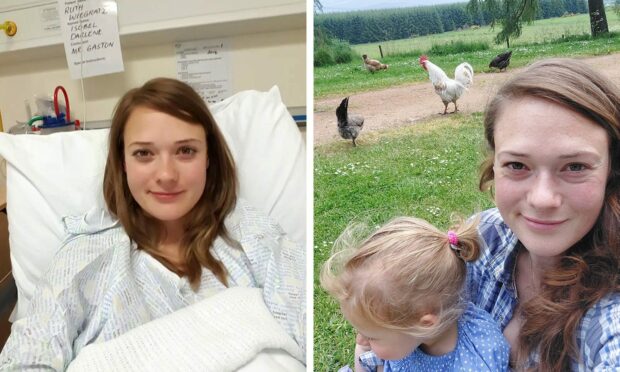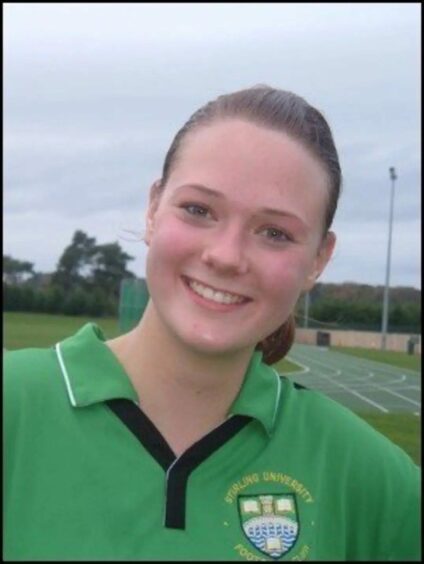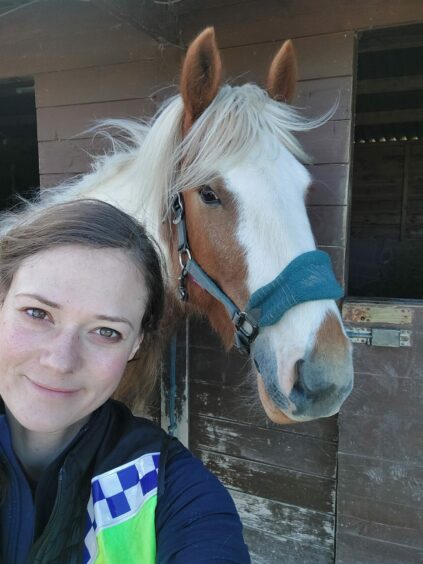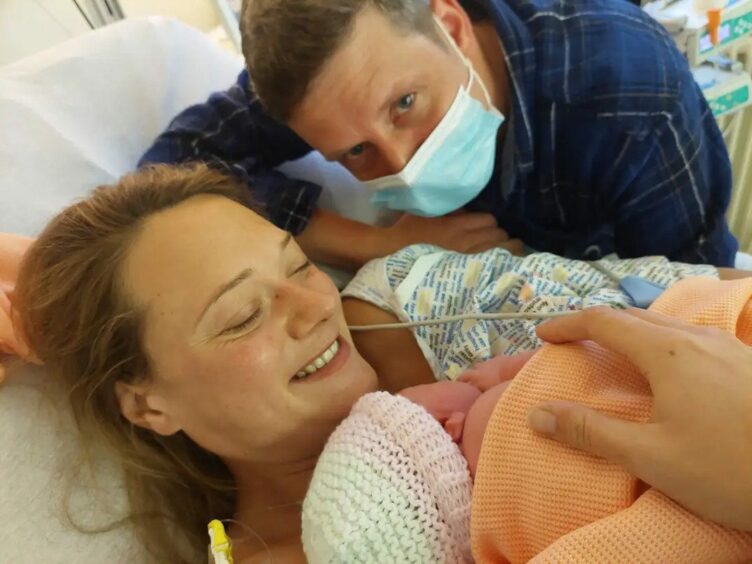Before Ruth Wiegratz-Hope lets daughter Brea run around her Moray garden in the morning, she sends out the chickens.
“My chicken gang!” says Ruth, laughing. “They are amazing. Apparently they can eat up to 200 ticks in an hour.”
The chickens run around for 30 minutes, gobbling up as many ticks as they can. According to Ruth, they have incredible eyesight and can even get the small ones, the ones that a human eye might not see.
It’s a detail that is very important to 35-year-old Ruth, who lives with constant pain and has to keeps a walking stick by her side… after one little tick bite changed her life forever.
An April Fool’s Day that was no joke
She’s not completely sure, but Ruth thinks her tick bite happened on April Fool’s Day.
In any case, it was late March or early May 2010, and Ruth was in Findhorn with her then boyfriend.
The couple were visiting the eco-villages at the Findhorn Foundation and Ruth was taking pictures of deer and – as she remembers it – traipsing through the long grass.
Ruth is from the Isle of Lewis, and has had lots of tick bites over the years, so when she discovered one that day she didn’t think anything of it. She brushed it off.
She soon developed a rash, and other tell-tale signs such as flu-like symptoms and joint pain. However, it wasn’t for another nine months that she was finally diagnosed with the bacterial infection known as Lyme disease.
Even then, her treatment was a two-week course of antibiotics, which Ruth says may have been effective if she’d just caught the infection.
But with it settled into her body, she embarked on what she calls a “gradual decline” that continues to affect her.
“I was actually two weeks into studying nursing [at Napier University] when I got the positive result back,” Ruth explains. “I tried to keep going but I just couldn’t focus because of all my symptoms.
“I couldn’t stand for longer than 40 minutes. I was struggling to get my words out, and to think and catch things. At times, it was like having dementia.”
‘It had just eaten away at my hips’
For Ruth, the next few years were a constant struggle. Before the tick bite, she had been a “very smart, very sharp” woman in her 20s who was quick to laugh and joke.
With Lyme, her personality shifted. “Dampened,” says Ruth. She was still the same person, but life was suddenly hard and serious.
The physical symptoms continued. Ruth got a job as a nanny but the pain in her joints became even more severe and she had to give it up.
Then, the keen horse rider then broke her left hip after a simple dismount. The damage, she says, was down to Lyme disease.
“The surgeons had to drill bits into the hip and build new cartilage because it was just bone against bone in there,” she says. “It had just eaten away at my hips.”
One hip was reconstructed in operations in 2016 and 2017, leaving Ruth the proud owner of a titanium replacement.
However, the incident brought home to her just how much Lyme disease was affecting her body. The hip damage had caused intense pain, and for a woman in her 20s it was an indicator of what might lie ahead.
“I found it very difficult in my 20s when my hips were really deteriorating,” Ruth says. “Pain makes you angry, especially if you are not used to it.
Ignorance around Lyme and its effects just added to Ruth’s challenges. Awareness has risen over the years but she still comes up against people who see it as something that is all in the mind, despite the clear medical evidence.
“The way you deal with that changes over the years, and the way you feel about it changes,” Ruth says.
The struggle to afford care for chronic Lyme disease
In 2019, Ruth’s cousin Zoe Paterson Macinnes filmed a documentary charting her fight to get access to better treatment for Lyme disease.
The 30-minutes film, called Blackbird, has just been released and highlights the frustration, anger and impotence that sufferers can feel in the face of their constant struggle.
Getting treatment through the NHS is difficult. There is currently no treatment in plan in place for people suffering from chronic Lyme disease, while private care can cost as much as £100,000.
Alternative treatments, meanwhile, such tai chi, yoga and acupuncture are also expensive. Ruth says she and Murray are not well off, so find these costs prohibitive.
The good news, however, is how far Ruth has come since the documentary was shot.
In those four years, she has moved from Penicuik just outside of Edinburgh where her boyfriend Murray worked in the whisky industry, to a house not far from the Macallan distillery near Aberlour.
What’s more, Murray is now her husband, and in 2021 the couple gave birth to Brea, a beautiful baby girl.
Why the chickens are so important to Ruth and Brea
Brea is the reason for the chickens. Ruth has five of them and they are her first line of defense in protecting her daughter from ticks. The morning chicken run is part of the family’s daily routine.
“They just nibble, not just the grass but the things off the top of the grass,” says Ruth. “I let them out for about half an hour and then Brea is allowed to roam a little bit in the garden.”
To the outside observer, the chickens may seem strange – even paranoid. For Ruth, however, they are a compromise in managing her fears around ticks, fears that have only sharpened since giving birth.
“You can become a bit paranoid with it, especially when you’ve got wee ones,” she admits. “For the first six months when Brea was little, I was checking every inch of her body twice a day.”
Watching episodes of Friends in New York City
Ruth’s new life includes an acceptance of her condition – of sorts. She is still in constant pain and takes a combination of medication and painkillers. She also carries a stick to help her walk when the pain and tiredness gets too much.
Mostly, however, she has learned to live with the pain, and adheres to as normal life as possible.
She is back horse-riding, which she still loves. And she and Murray travelled to New York recently, though fatigue meant some days were spent inside their apartment watching Friends episodes on TV.
“That was really cool,” Ruth says with a laugh.
One thing she hasn’t done is go back to the Findhorn Foundation, the place where she was bitten by the tick.
It’s on the list though.
“I will go back one day,” Ruth says. “I don’t know actually why I haven’t yet. I’m quite a bold person usually.”








Conversation